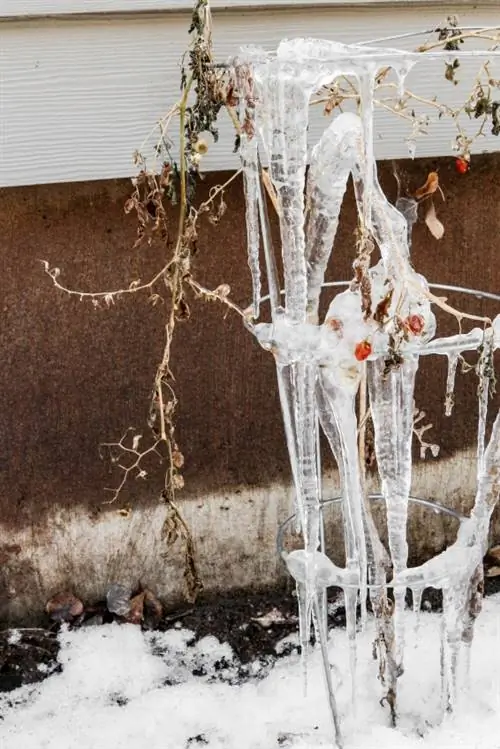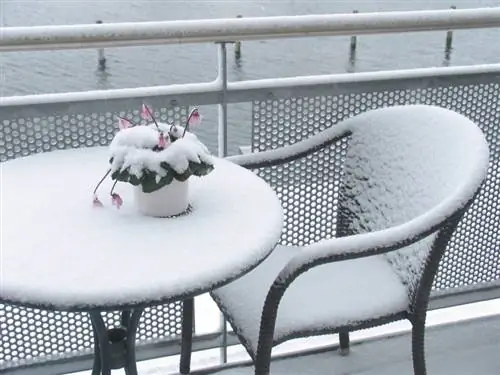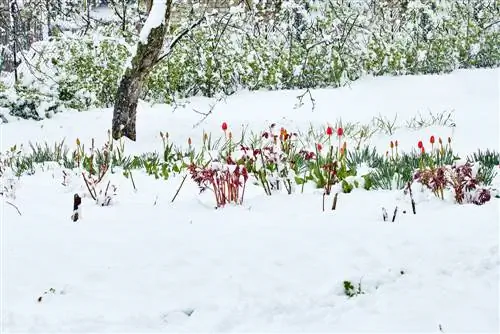- Author admin [email protected].
- Public 2023-12-16 16:46.
- Last modified 2025-01-23 11:20.
Gladiolus are relatively easy to care for and are among the most magnificent flowering plants in the perennial bed. Once the flowering period is over and the gladioli have completely grown their leaves by autumn, many garden fans wonder what to do next with the bulbs. Are the gladioli hardy and can they remain in the bed or do the bulbs have to overwinter elsewhere?

Are gladioli hardy?
Most gladioli are not hardy and should be dug up before the first frosts, dried and stored frost-free but cool. A few hardy varieties can remain in the bed, but should be protected with leaves or brushwood.
Gladiolus are sun worshipers
The original home of the gladiolus is in Africa and the warm regions of the Mediterranean countries. The plant has adapted perfectly to the hot weather conditions prevailing there. Accordingly, the onions may only remain in the ground during the cold season in regions where there is guaranteed to be no risk of night frosts.
Only a few species are so hardy that they can survive a long, cold winter unscathed. These varieties can overwinter outside, well protected by a thick layer of leaves or brushwood. If you are not sure whether the gladioli you are caring for are frost-resistant, you should definitely dig up the bulbs and store them indoors until next spring.
Overwintering gladioli
Be sure to dig up the onions before the first night frosts. Proceed as follows:
- Cut back yellowed leaves about fifteen centimeters.
- Dig out tubers carefully.
- Separate the breeding bulbs from the mother plant; you can use them for propagation.
- Remove soil from the tubers.
- Put the onions on newspaper and let them dry well so that they don't start to rot.
Store frost-free but not too warm
Once the onions have dried well, the soil that is still loosely attached is removed and the onions can move to their winter storage. The room must be frost-free. At the same time, a temperature of fifteen degrees should not be exceeded so that the gladioli do not sprout prematurely. You no longer have to spread the onions out, but can layer them loosely in a small vegetable box or an airy cardboard box.
Tip
Add a mixture of sand and soil to the container to prevent the bulbs from drying out completely. This means the tubers sprout better in spring.






